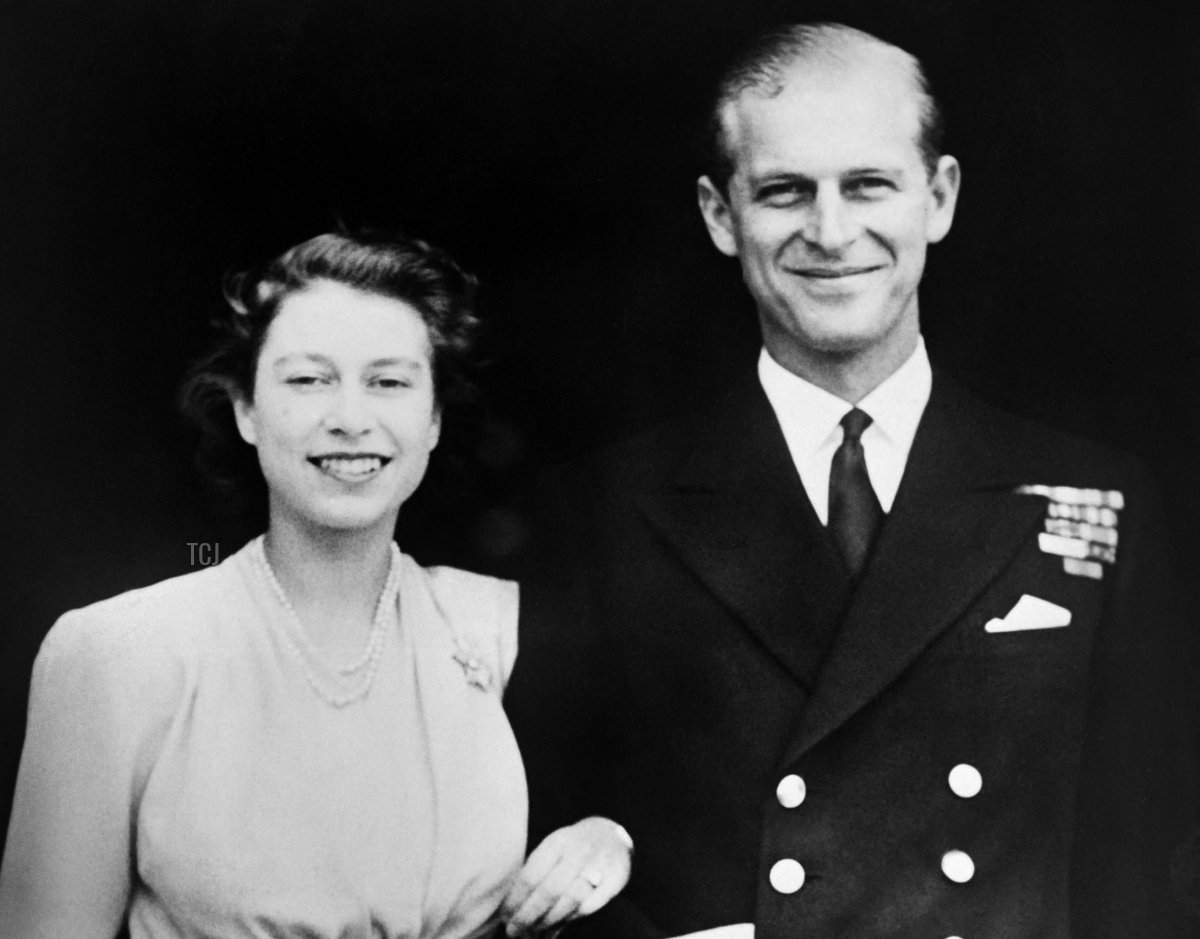
Seventy-five years ago, Britain was buzzing with the exciting news that the heiress presumptive, Princess Elizabeth, would soon marry a handsome prince. Today, we’re looking back at the story (and the jewels!) of the Queen and the Duke of Edinburgh’s royal engagement.
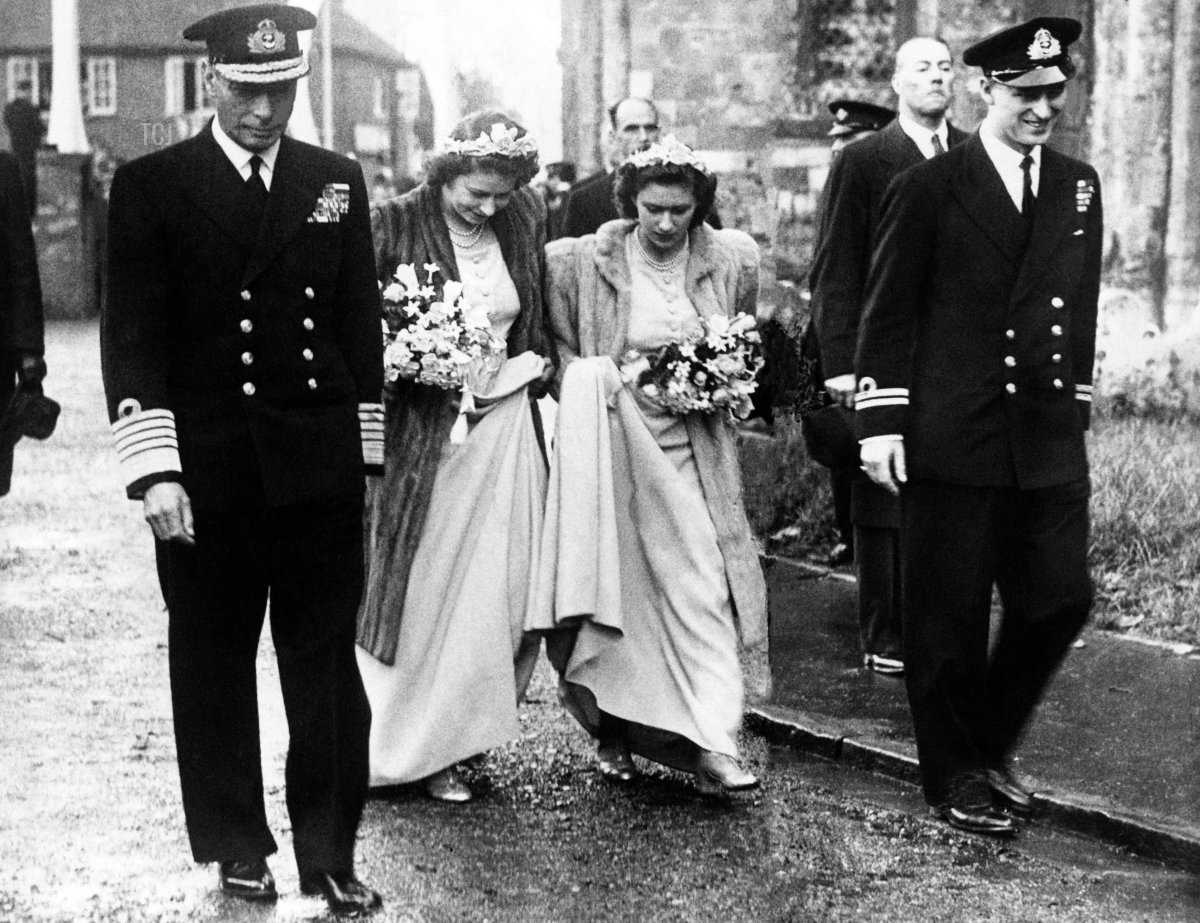
Princess Elizabeth of the United Kingdom and Prince Philip of Greece and Denmark had a royal romance that simmered during the war. By 1946, they had fallen deeply in love, and that September, he asked her to marry him at the Balmoral estate in Scotland. Elizabeth’s father, King George VI, gave the couple his blessing, but he asked that they wait until after her 21st birthday the following April to announce their upcoming nuptials to the public. Elizabeth and Philip agreed.
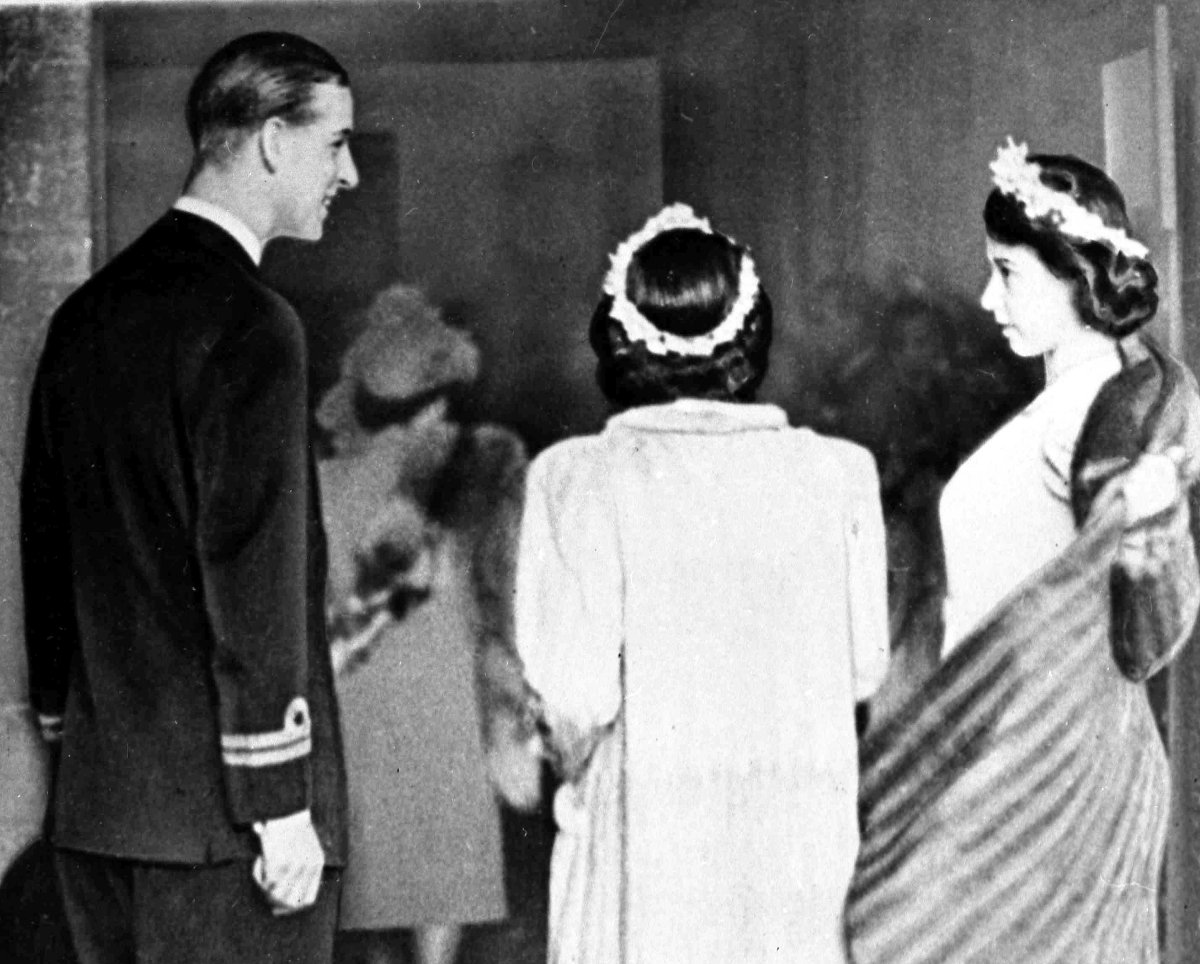
The public, though, had been speculating about a possible wedding between the pair for some time. The rumors ramped up in October 1946, when they were photographed together at the wedding of a mutual cousin, Lady Patricia Mountbatten. The palace demurred when pressed about an engagement, keeping mum about the romance as the King had requested.
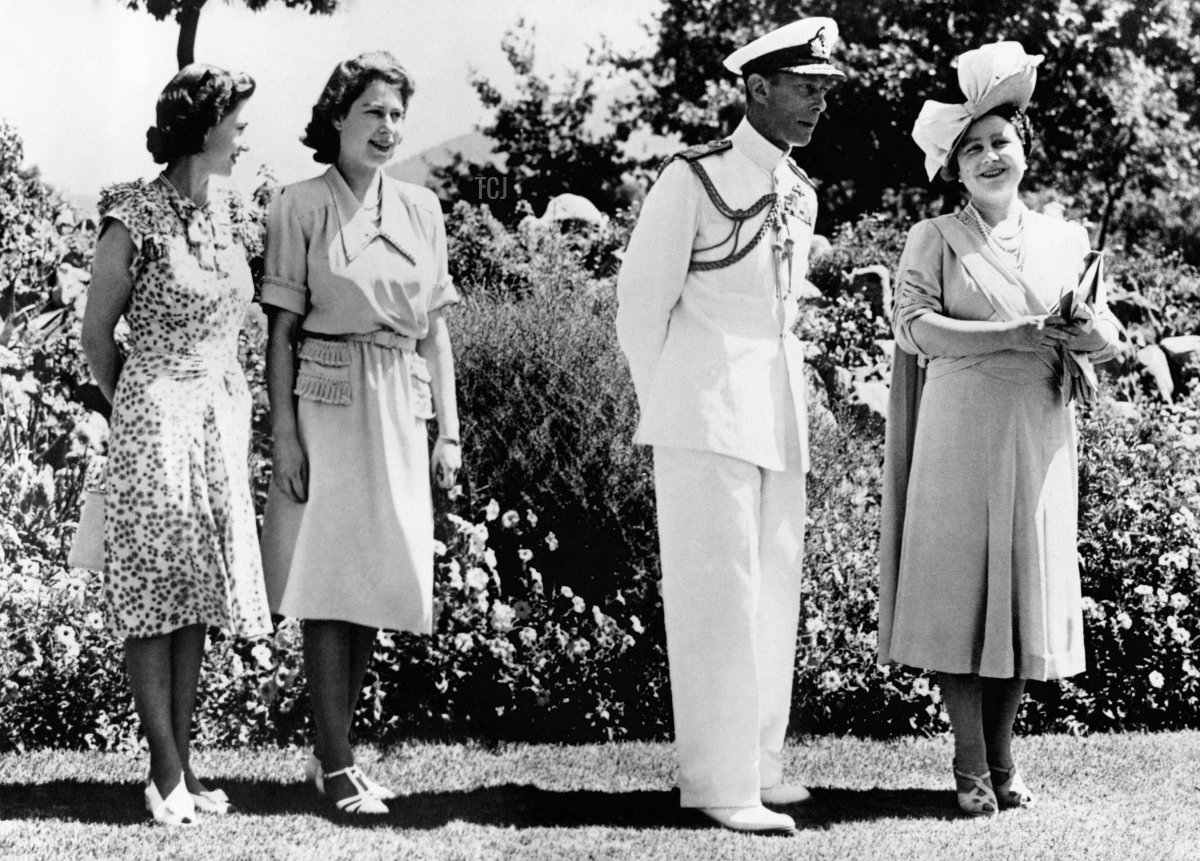
Princess Elizabeth celebrated her 21st birthday in Cape Town during the royal family’s tour of countries in southern Africa in the spring of 1947. The trip was a meaningful one for Elizabeth and her parents, King George VI and Queen Elizabeth, and her sister, Princess Margaret. It would be one of the last times they would be together as “We Four,” the tight family unit that had been together for two decades, through the abdication and war years.
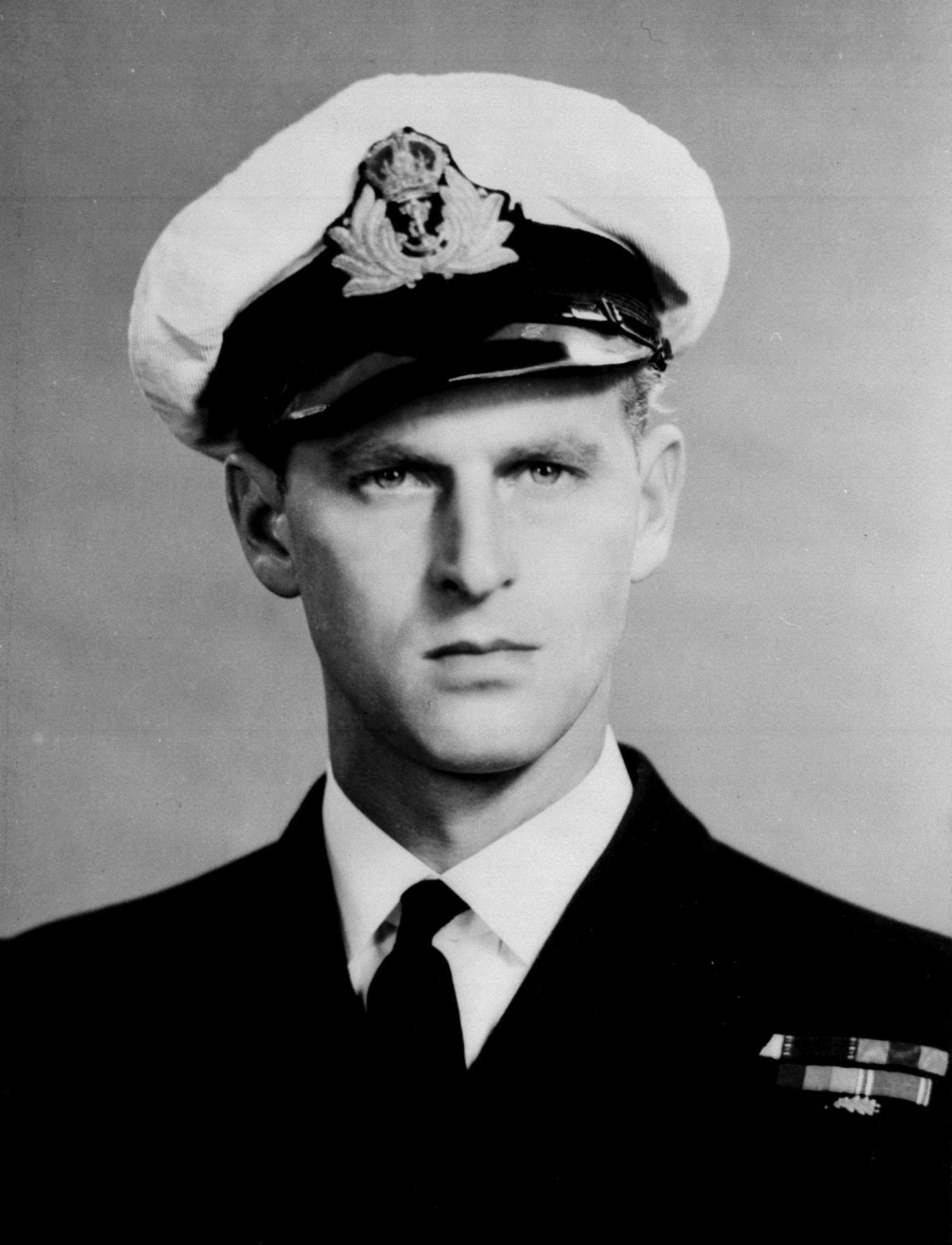
Meanwhile, Philip was quietly making preparations to join the royal family. On March 18, 1947, the London Gazette published the announcement that he had become a British subject. “Mountbatten, Philip, Greece, serving officer in his Majesty’s forces, 16, Chester Street, London, S.W.1 28 February, 1947,” the item read. The Guardian explained that Philip had taken the oath of allegiance on February 28. They also noted, “The form of the notice shows that the normal procedure has been followed by which a foreigner, on being granted British naturalisation, abandons any title he may have. The Greek Royal Family…has no surname. Prince Philip has therefore taken the surname of his mother’s family.”
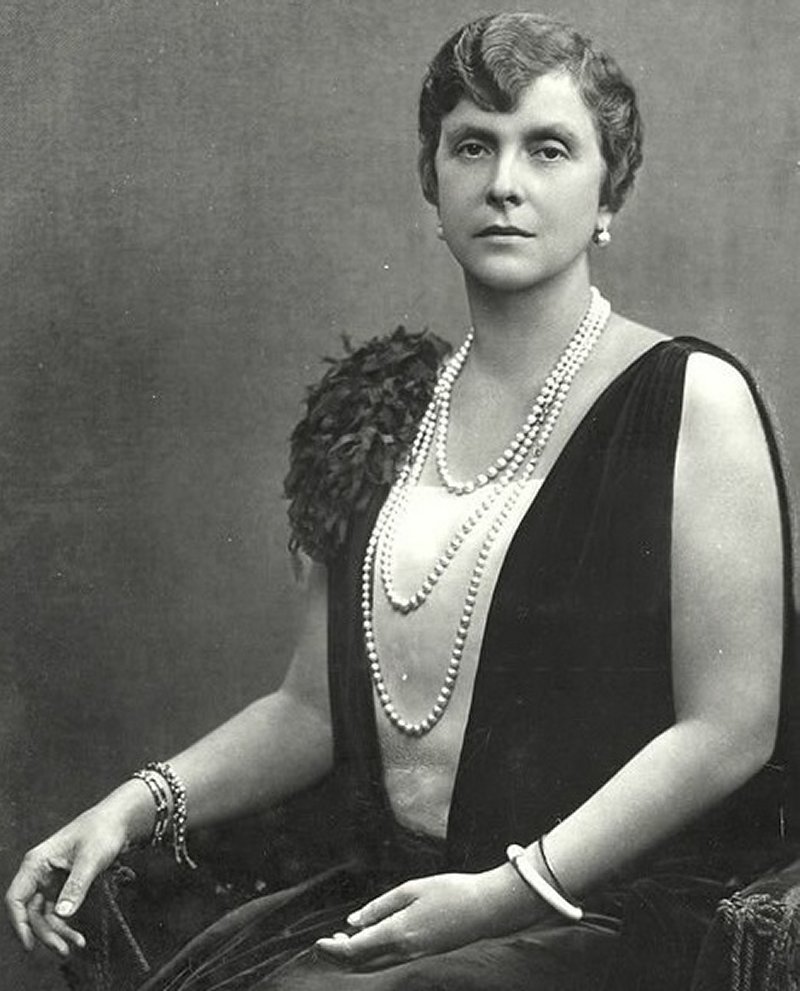
Philip may no longer have legally been a prince, but he was still a part of the extended Greek royal family, and that spring was a time of intense change for them. On April 1, 1947, Philip’s first cousin, King George II of the Hellenes, unexpectedly died in Athens. George’s brother subsequently became King Paul of the Hellenes. Papers speculated that Philip would attend the late king’s state funeral, but he does not appear to have traveled to Greece for the ceremony. His mother, Princess Andrew of Greece and Denmark (Princess Alice of Battenberg), was present for the event. Both King George II and King Paul were her nephews by marriage. Alice rode in a car in the funeral procession beside her sister-in-law, Princess Nicholas (mother of Princess Marina, Duchess of Kent), and she also attended King Paul’s public oath-taking ceremony a few weeks later. The court mourning period for the late king was set at six months.
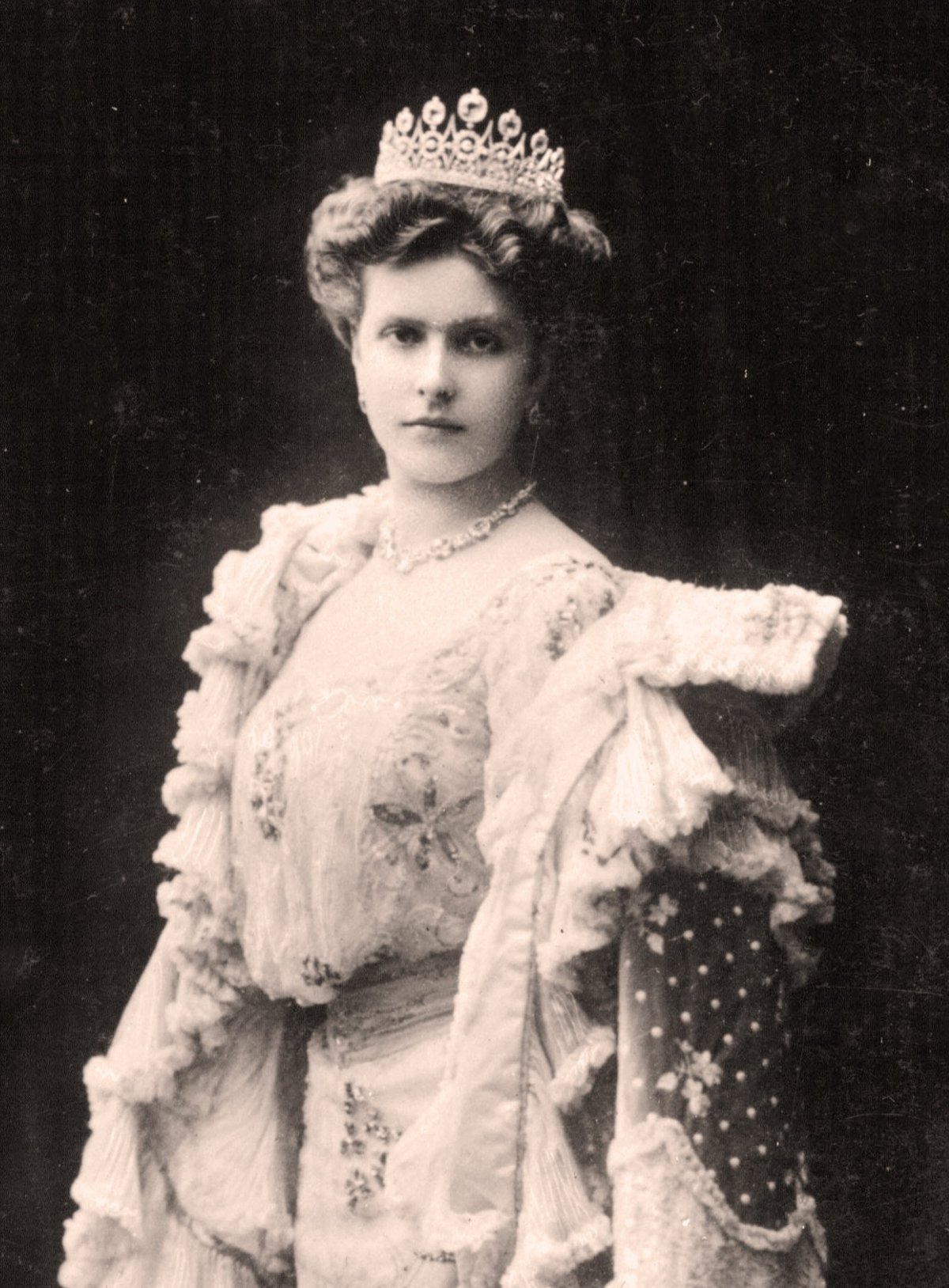
Just a few days after King Paul’s inauguration ceremonies, Alice left Athens for France. She landed at the airport in Paris on April 26, and she was confronted by a Reuters reporter asking questions about her son’s rumored engagement. “I am afraid I cannot tell you anything,” Alice demurred. She noted that she was stopping briefly in Paris to shop and see friends on her way back to England, where she would help care for her aging mother, the Dowager Marchioness of Milford Haven. The truth, though, was that Alice was in Paris on a mission. While staying at the Greek embassy in the city, she made a trip to a Parisian bank to retrieve an aquamarine and diamond tiara. The jewel had been one of her own wedding gifts, a present from her uncle and aunt, Emperor Nicholas II and Empress Alexandra of Russia, in 1903. Alice is pictured above wearing the tiara ca. 1909.
Now, Alice planned to use the diamonds to have an engagement ring made for her future daughter-in-law. She told her brother, Lord Mountbatten, that “Philip dared not show his face at jewellers for fear of being recognized.” So, when she returned in London at the end of April, she went herself to Philip Antrobus in Bond Street to have an engagement ring made for Elizabeth. A three-carat diamond taken from her tiara was set in platinum, with additional smaller stones, to make a gorgeous engagement ring for the princess. “I think the ring is a great success,” Alice told Dickie. (More of the diamonds from the tiara were also used to make a fabulous wedding present for Philip to present to his bride.)
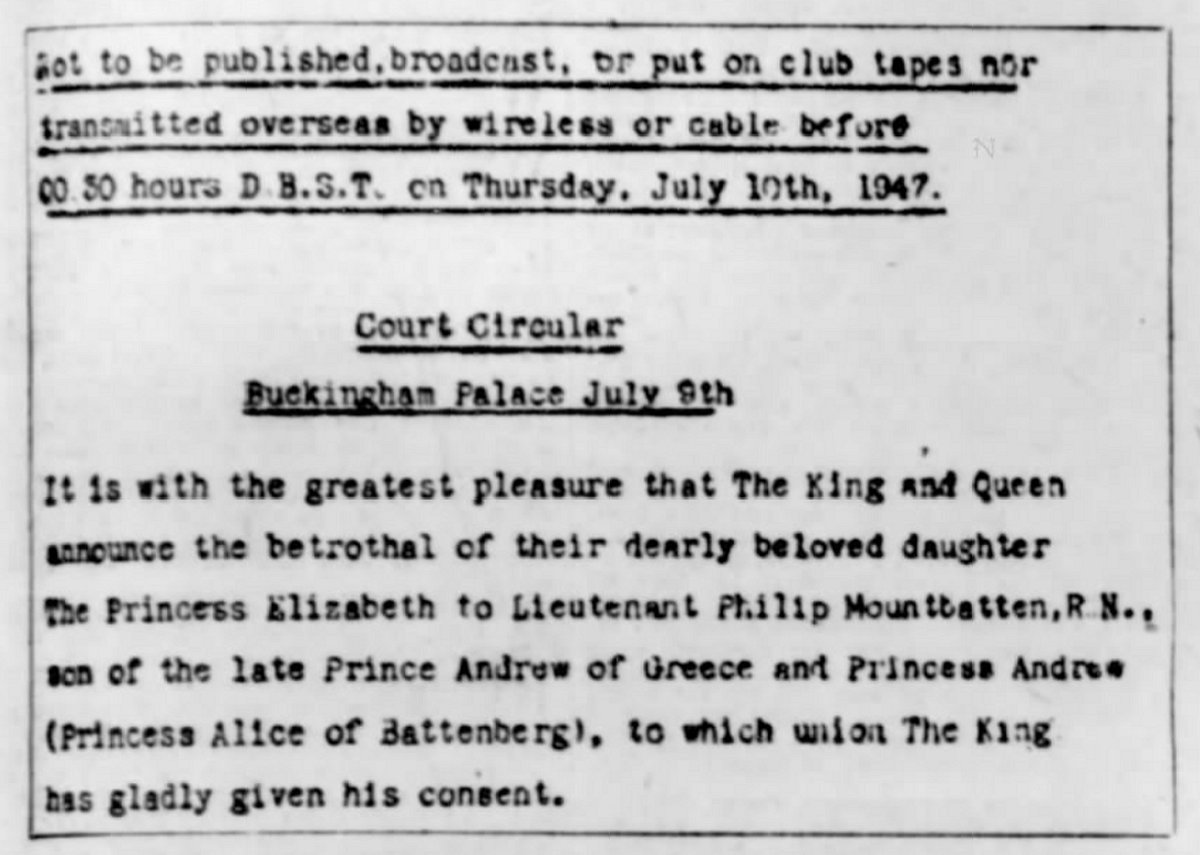
The princess had celebrated her birthday, the prince had official become a Brit, and the engagement ring had been procured. In her controversial royal memoir, Marion Crawford remembers that Elizabeth came into her room early on the morning of July 9 to show off her new engagement ring. The ring was too large, Crawfie remembered, because “of course [Elizabeth] had been unable to go and try it on.”
That same day, the palace was preparing finally to make an announcement about the couple’s wedding plans. Courtiers drew up an official bulletin (pictured above) to be disseminated to the press. The bulletin, issued on July 9, included strict instructions that the information was subject to an embargo until half an hour after midnight on July 10. (You’ll often see conflicting statements about the couple’s engagement being announced on July 9 or July 10. This is because the bulletin was dated July 9, but the embargo on the news wasn’t lifted until 12:30 AM on July 10!) The timing was designed to allow members of the press in all of the nations of the Commonwealth to share the news together. Even so, word quickly got out, and national papers published splashy headlines on July 9, confidently predicting that the engagement would be announced imminently.
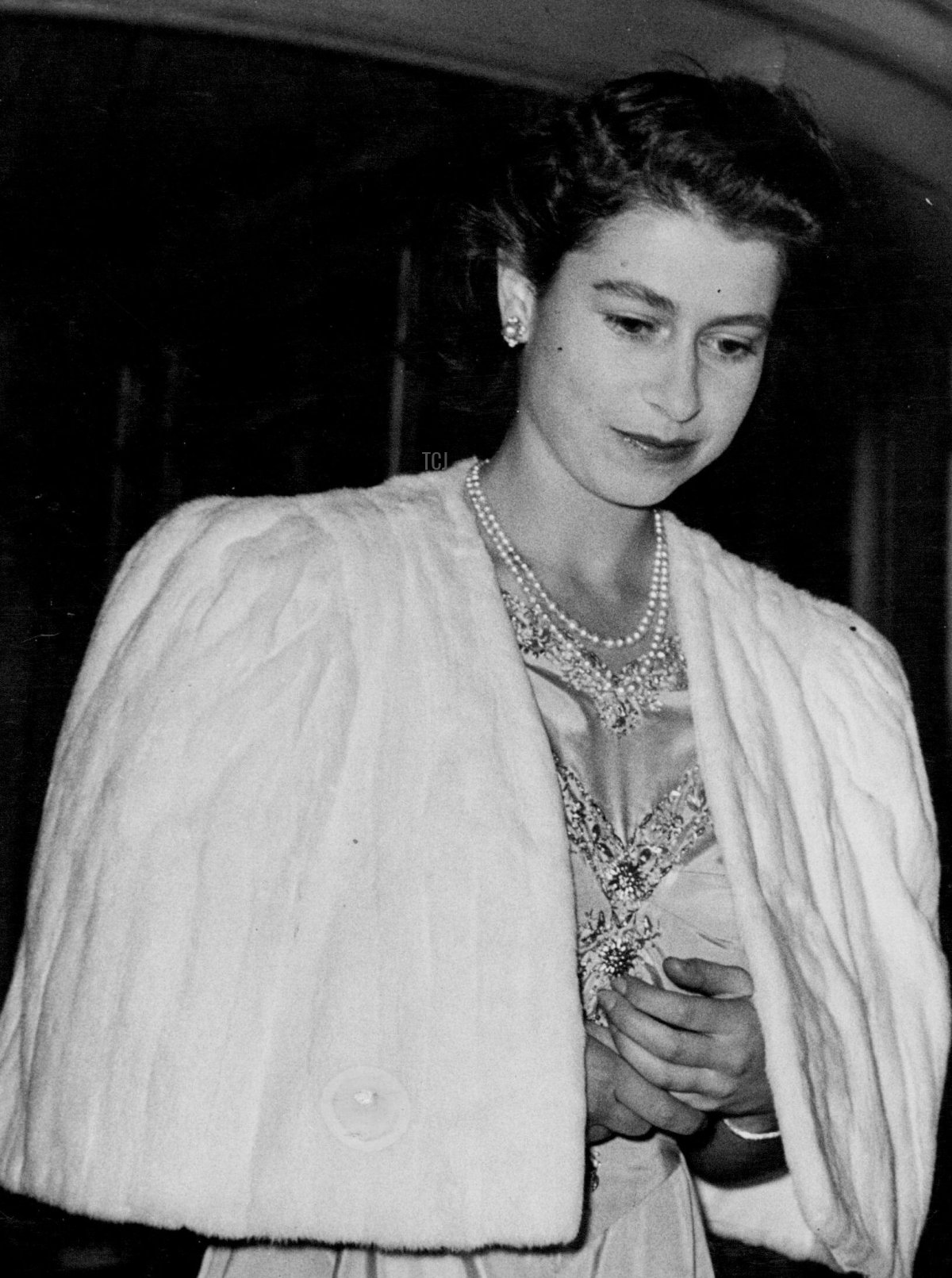
Faced with intense questioning, Captain Lewis Richie, the King’s press secretary, delivered an official statement: “I expect the King will either make a statement himself or authorise a statement about Princess Elizabeth some time tonight. This is neither a denial nor a confirmation of the report of the betrothal, but it is quite true that the King’s statement will be about the report of the betrothal. I have no authorisation to enlarge upon what has already been said.”
That evening, the rumors intensified when Philip pulled up in his sportscar outside Buckingham Palace to have dinner with the King. (Queen Elizabeth was battling a cold at the time.) Princess Elizabeth left the palace that evening with a lady-in-waiting, Lady Margaret Egerton (later the wife of Sir Jock Colville), to attend a small private dinner at the Dorchester Hotel. The party was a coming-out celebration for Ursula and Fay James, daughters of the Hon. Robert and Lady Serena James.
Following the dinner, Elizabeth danced until two o’clock in the morning at Apsley House, home of the Duke of Wellington. The Telegraph wrote that Elizabeth wore “a picture dress of lime green taffeta embroidered with gold sequins and an ermine shoulder cape.” She added a double strand of pearls and pearl earrings to the ensemble. The disappointed press noted that she didn’t wear an engagement ring, and Lieutenant Mountbatten didn’t make an appearance at the dinner or the dance. While the princess was dancing away in London, the press embargo was lifted, and the world could share the happy news that she would soon become a bride.
On the morning of July 10, Princess Elizabeth joined the royal family at Westminster Abbey for the unveiling of a new memorial to the Royal Air Force pilots who perished during the Battle of Britain. The King and Queen were there with both Princesses Elizabeth and Margaret. Queen Mary, the Duchess of Kent, and the Duke and Duchess of Gloucester were present as well. Philip was not part of the royal family party for the memorial unveiling. Papers reported that Elizabeth wore a coffee-colored suit and matching straw and lace hat with brown and white shoes for the visit to the Abbey. She also wore pearls and the Diamond Clematis Brooch, which she’d received as a 21st birthday gift a few months earlier.
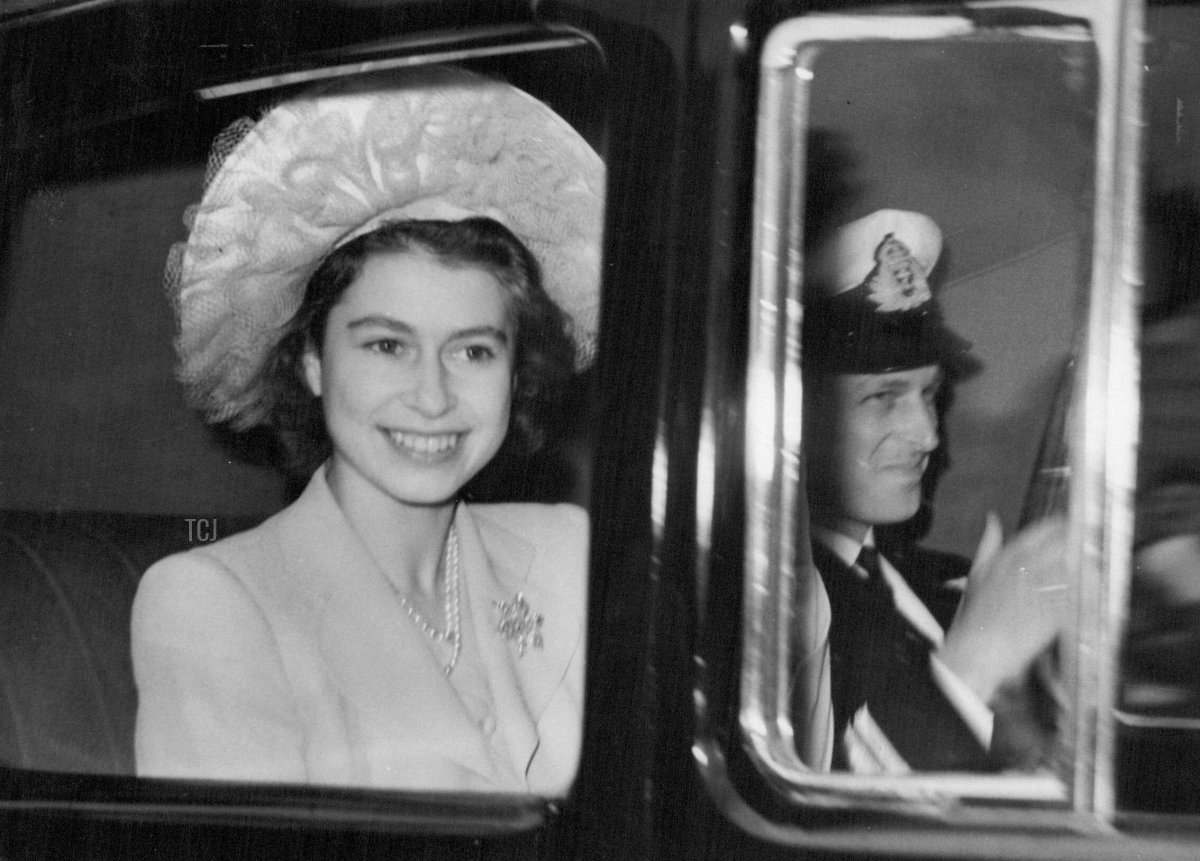
Philip may not have been at the Abbey, but soon after he made his debut as a part of the royal party at his first official function with his bride-to-be. A garden party was held at Buckingham Palace that afternoon, where the couple received congratulations from members of the public in person for the first time. Before the party, though, they had lunch at the palace and then drove to Marlborough House to see Queen Mary together.
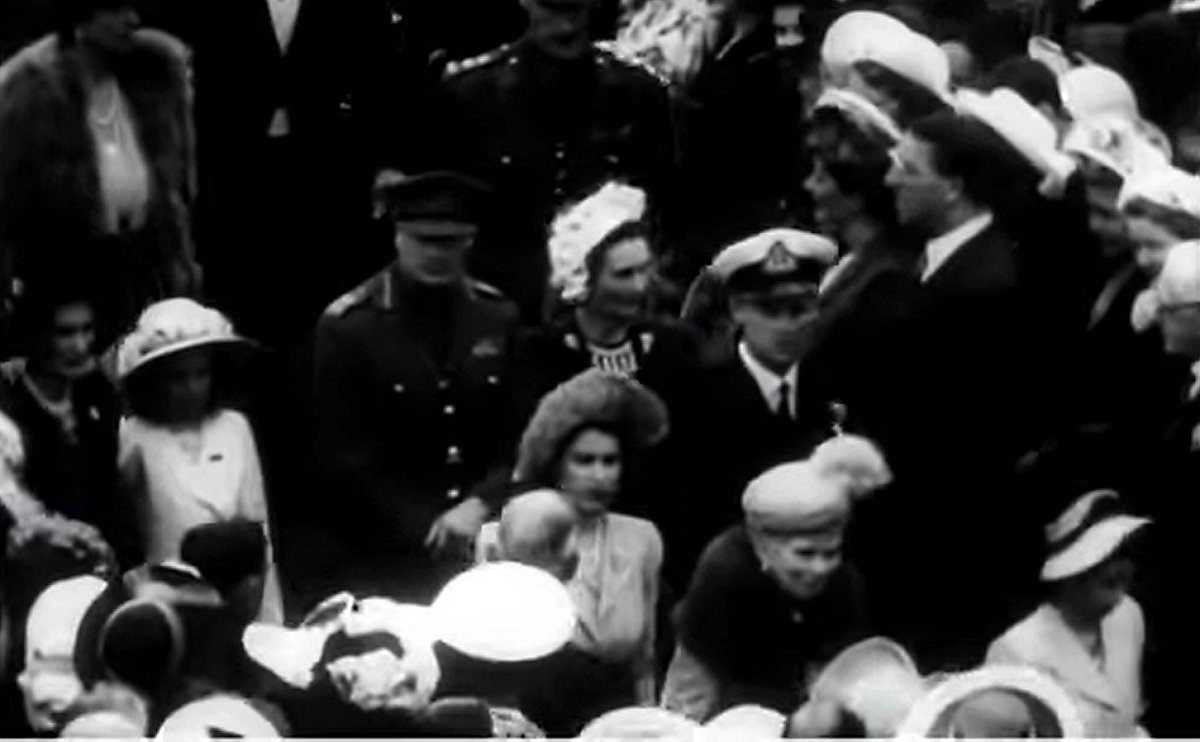
Queen Mary was also present at the garden party, as were many other members of the royal family. The King, the Queen, and Princess Margaret were there with the newly-engaged couple, and the Duke and Duchess of Gloucester were also in attendance, as were the Duchess of Kent and Princess Alexandra. Princess Andrew was also there, as were Lord and Lady Brabourne (daughter and son-in-law of Lord Mountbatten). I think I also spotted the Dowager Marchioness of Milford Haven walking beside her daughter in this newsreel footage.
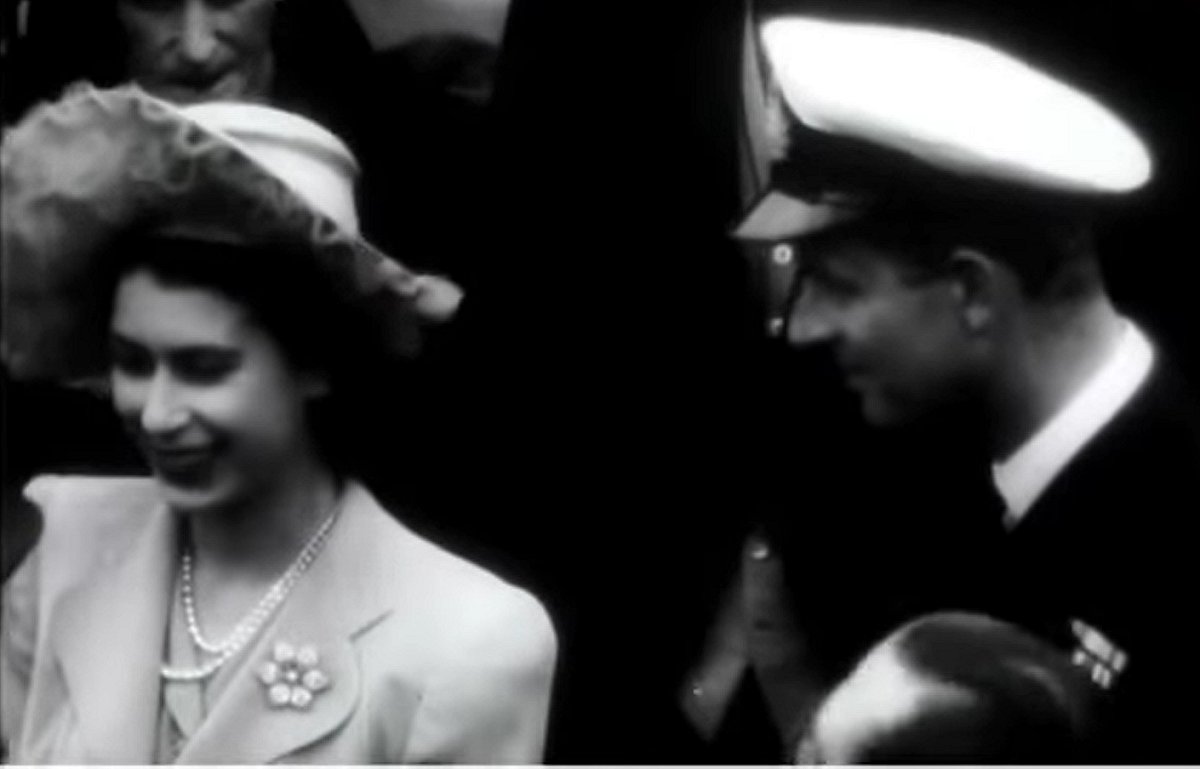
Party attendees hoping for a glimpse of the princess’s engagement ring were disappointed, as she wore gloves for the event. But her pearls and Diamond Clematis Brooch gleamed mightily as she and her fiancé mingled with the crowd.
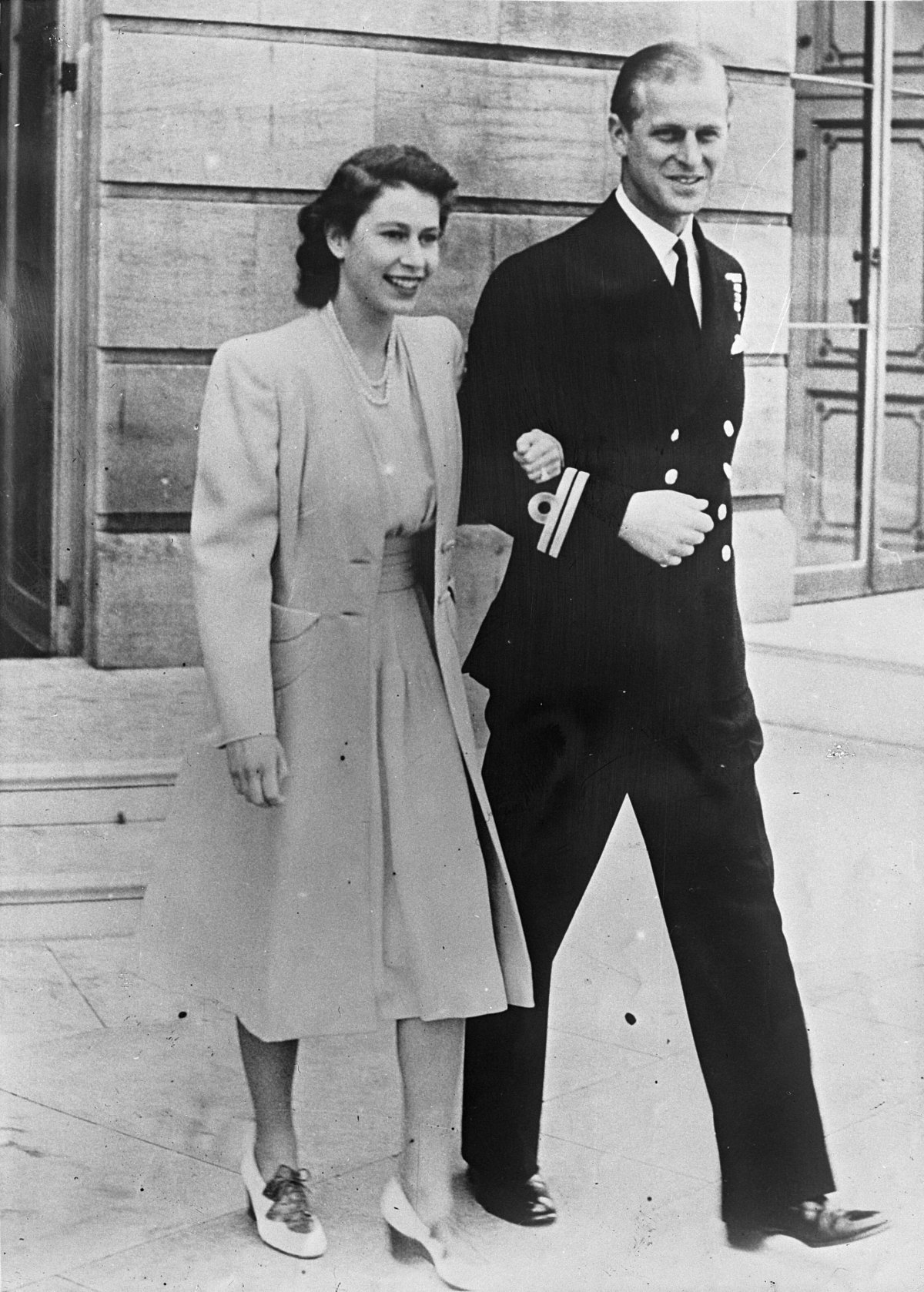
Her engagement ring was front and center, however, during the press photo session at the palace that also took place on July 10. Elizabeth wore a dress and jacket described by the papers as being made of “daffodil yellow silk” as she and Philip strolled before both still and movie cameras on the palace terrace.
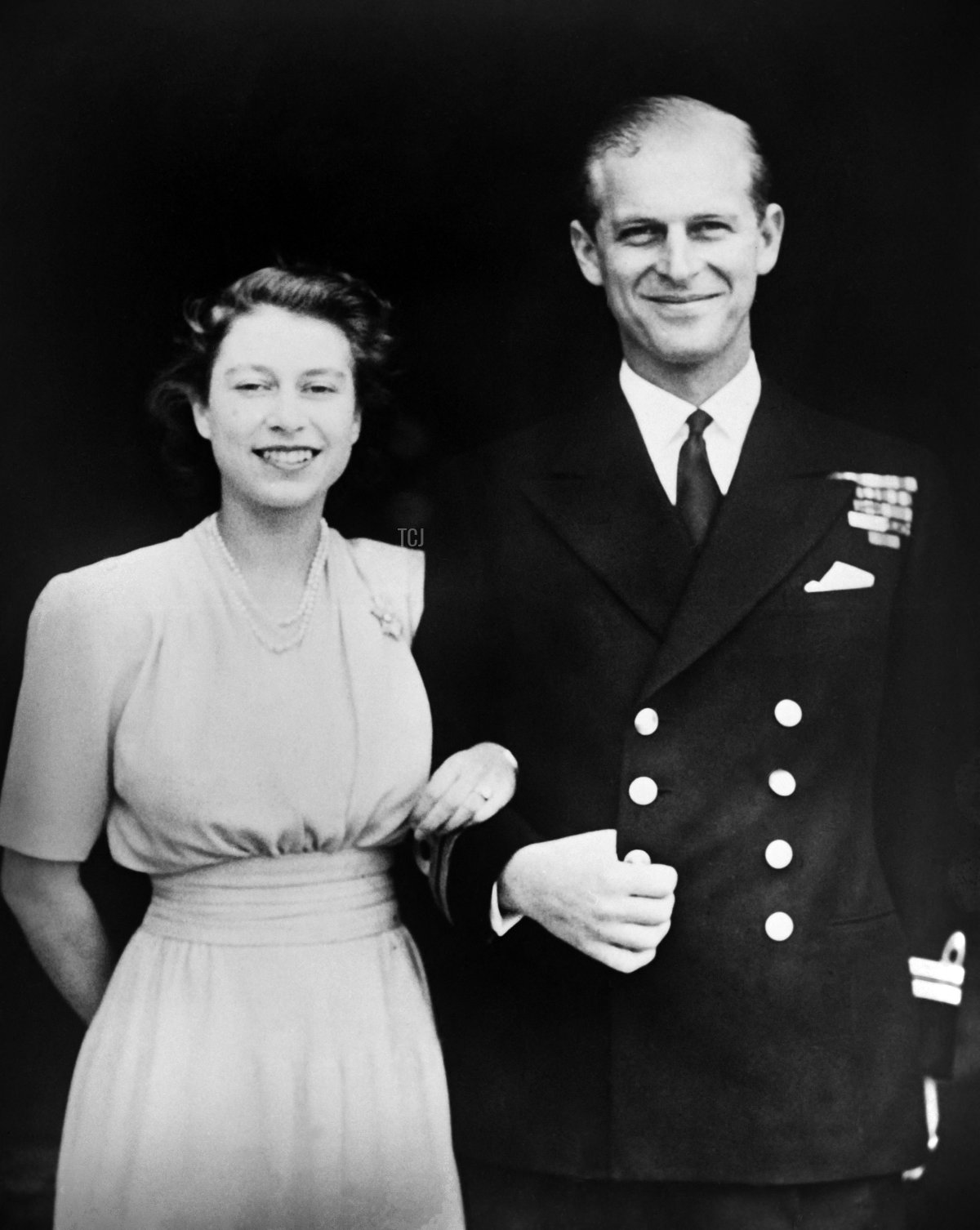
She again wore the Diamond Clematis Brooch as they posed for the photographers. William Horton of the Times took the still photographs, while Graham Thompson of the British News Reels Association was behind the cine camera. Both men offered their congratulations to the couple, and Elizabeth replied, “How sweet. Thank you very much. It is kind of you.”
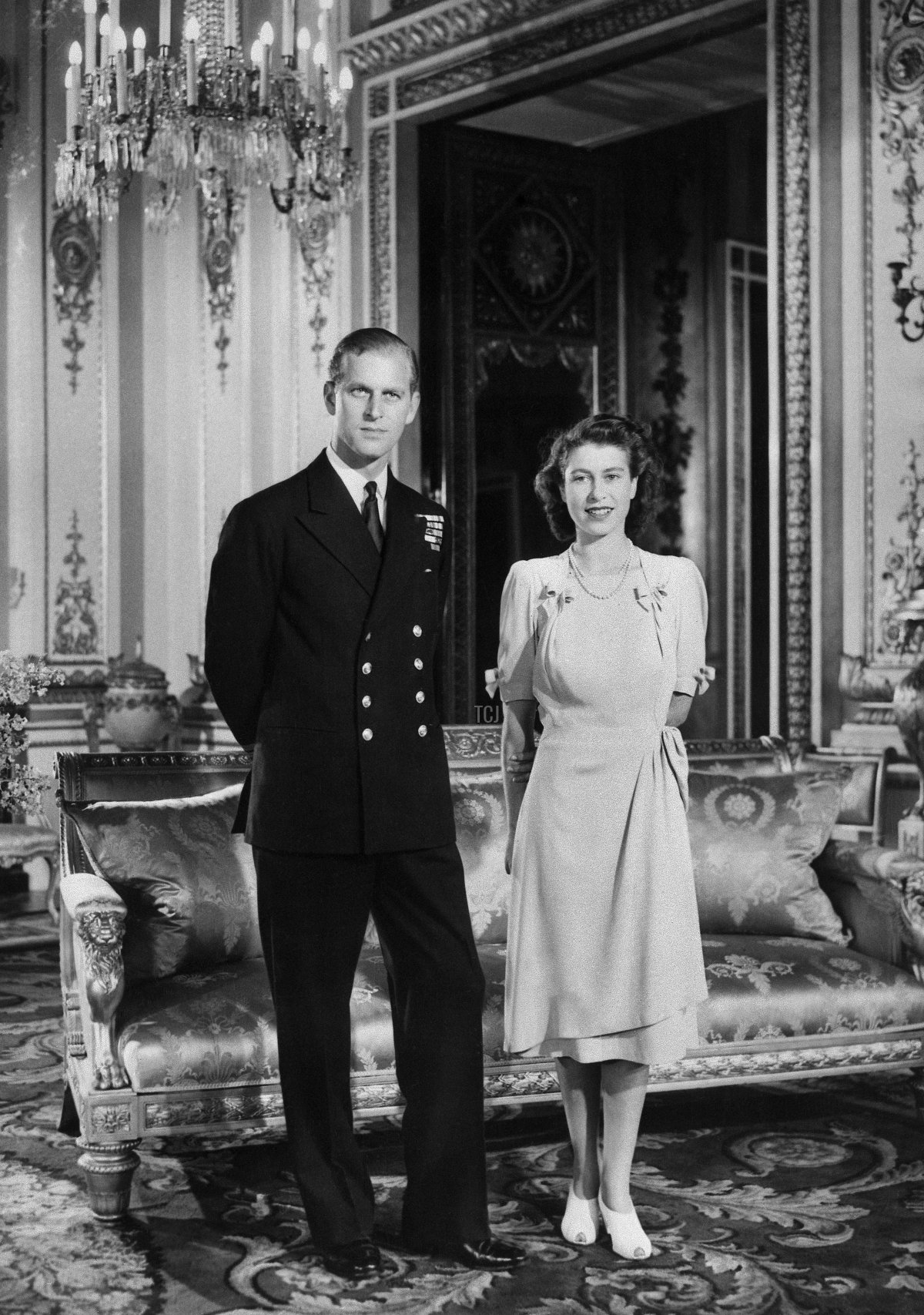
Portraits of the couple were also taken inside Buckingham Palace. Elizabeth changed into a different dress and accessories for the portrait session, wearing just pearls and her ring as accessories. (A brooch would have been difficult to place with the dress’s bow detailing.)
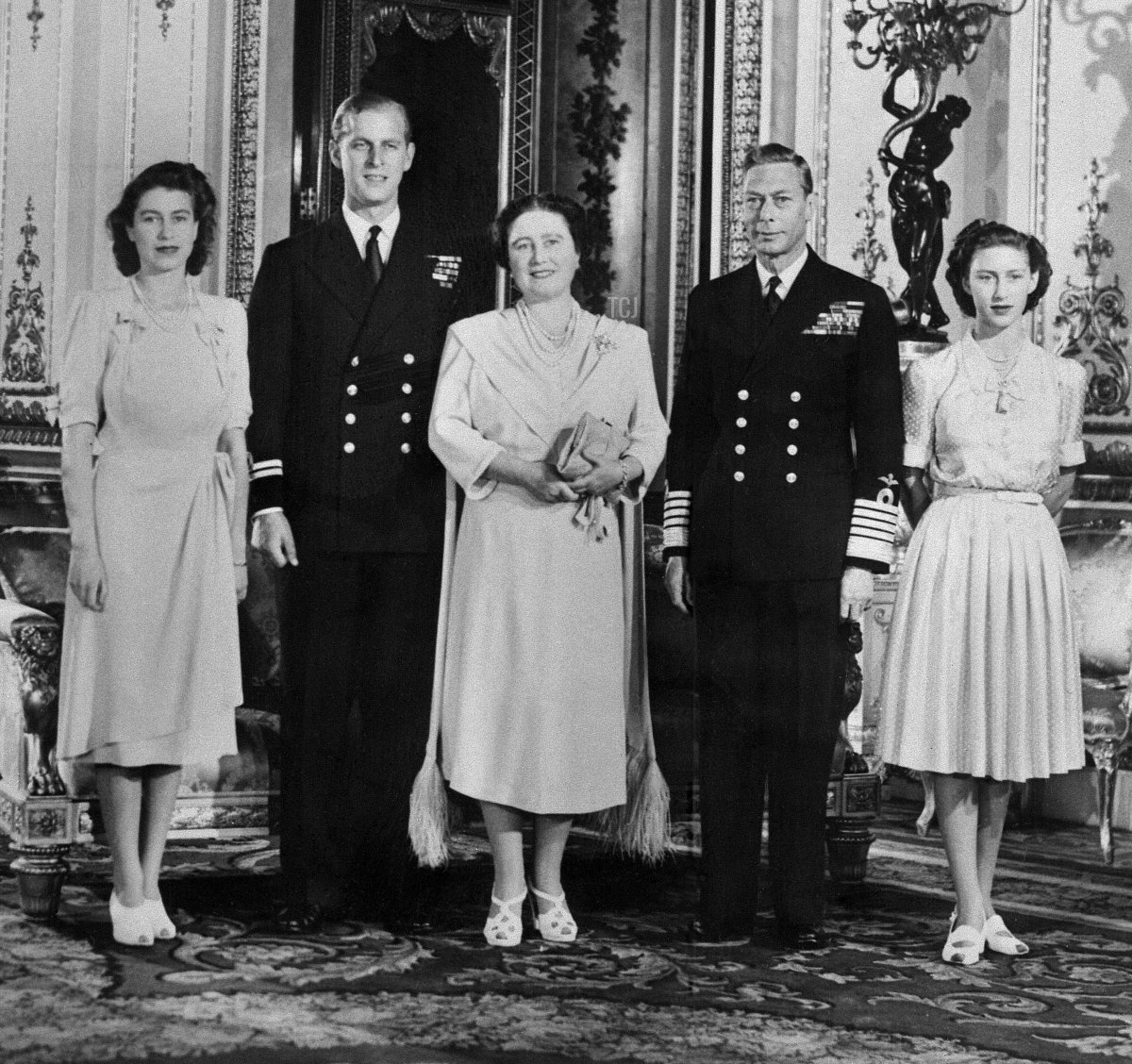
The King, the Queen, and Princess Margaret were also photographed with Elizabeth and Philip during the portrait session.
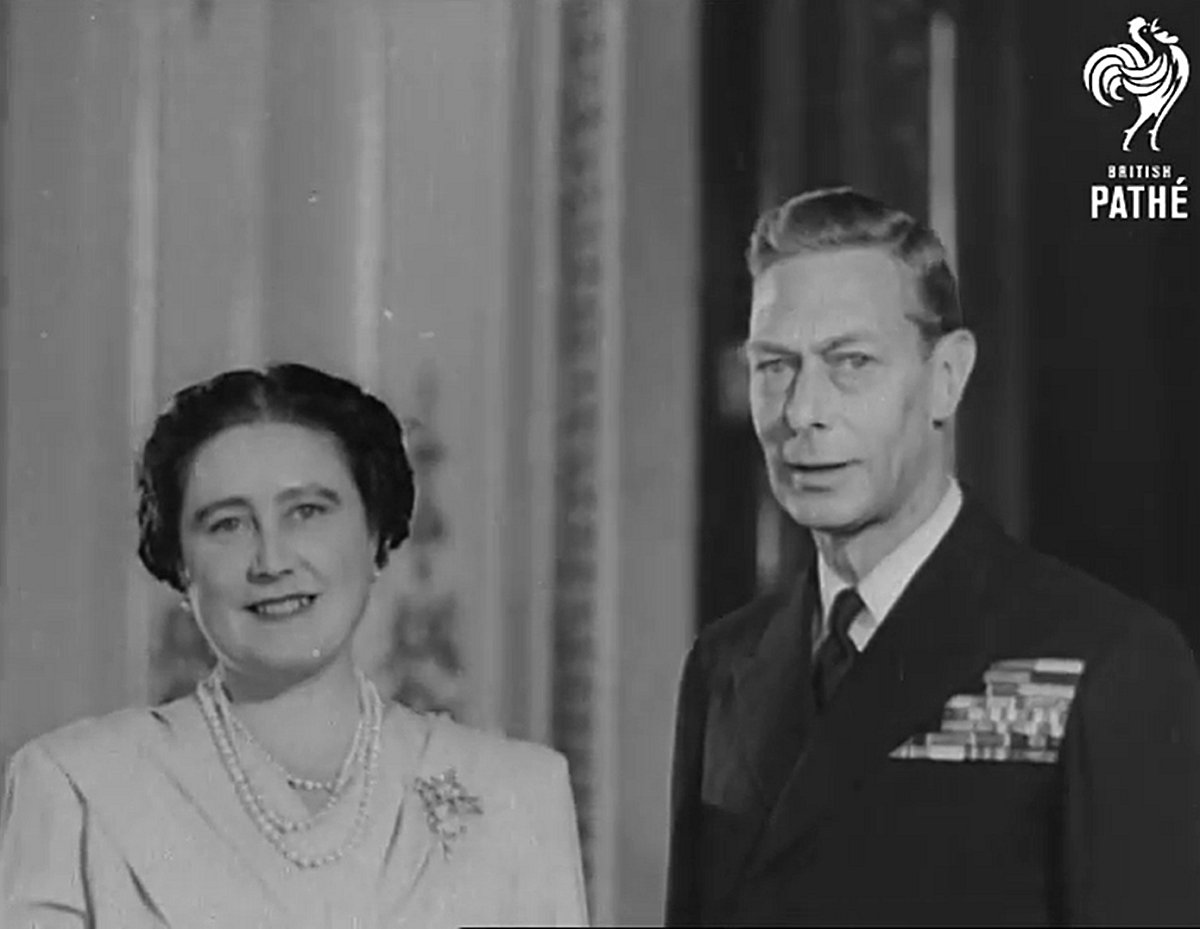
Queen Elizabeth wore pearls with Queen Victoria’s Diamond Jubilee Brooch for the photographs.
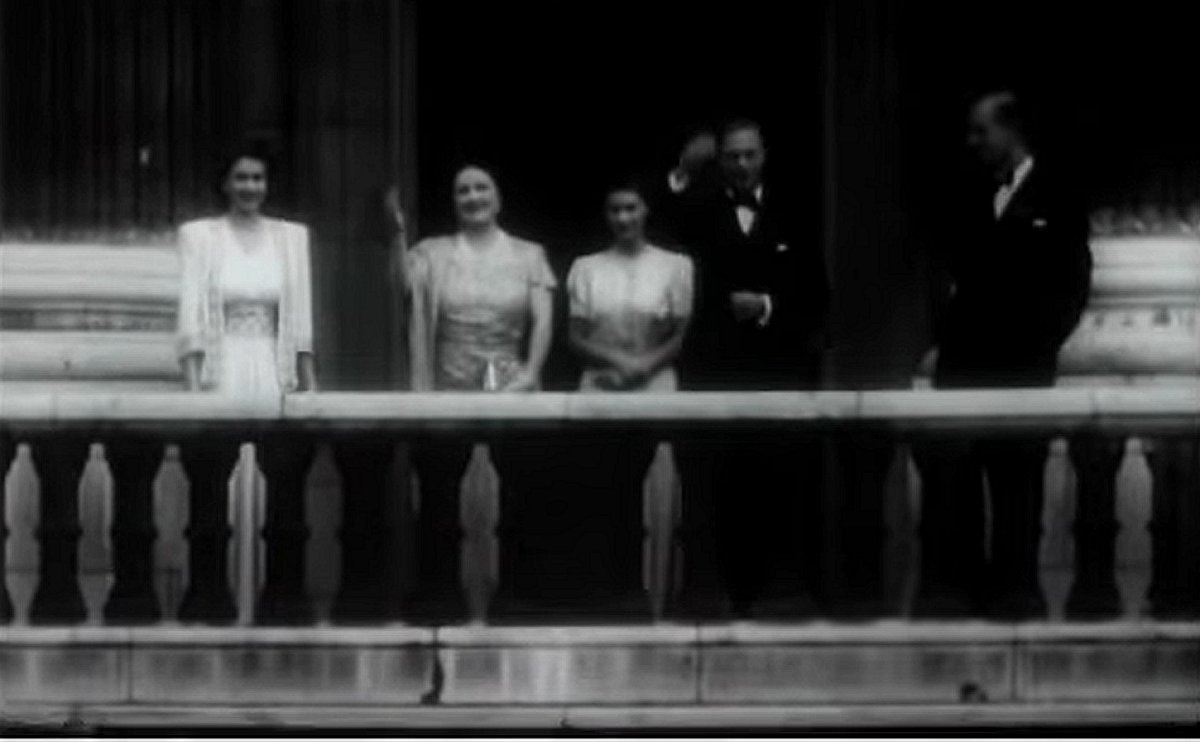
Later on, the couple dined with the rest of the family at the palace. Afterward, at around nine o’clock, the royal family appeared on the palace balcony to greet members of the public who had gathered in hopes of seeing the princess and her fiancé. It was their first balcony appearance as “We Five.” They had dressed in black-tie attire for dinner.
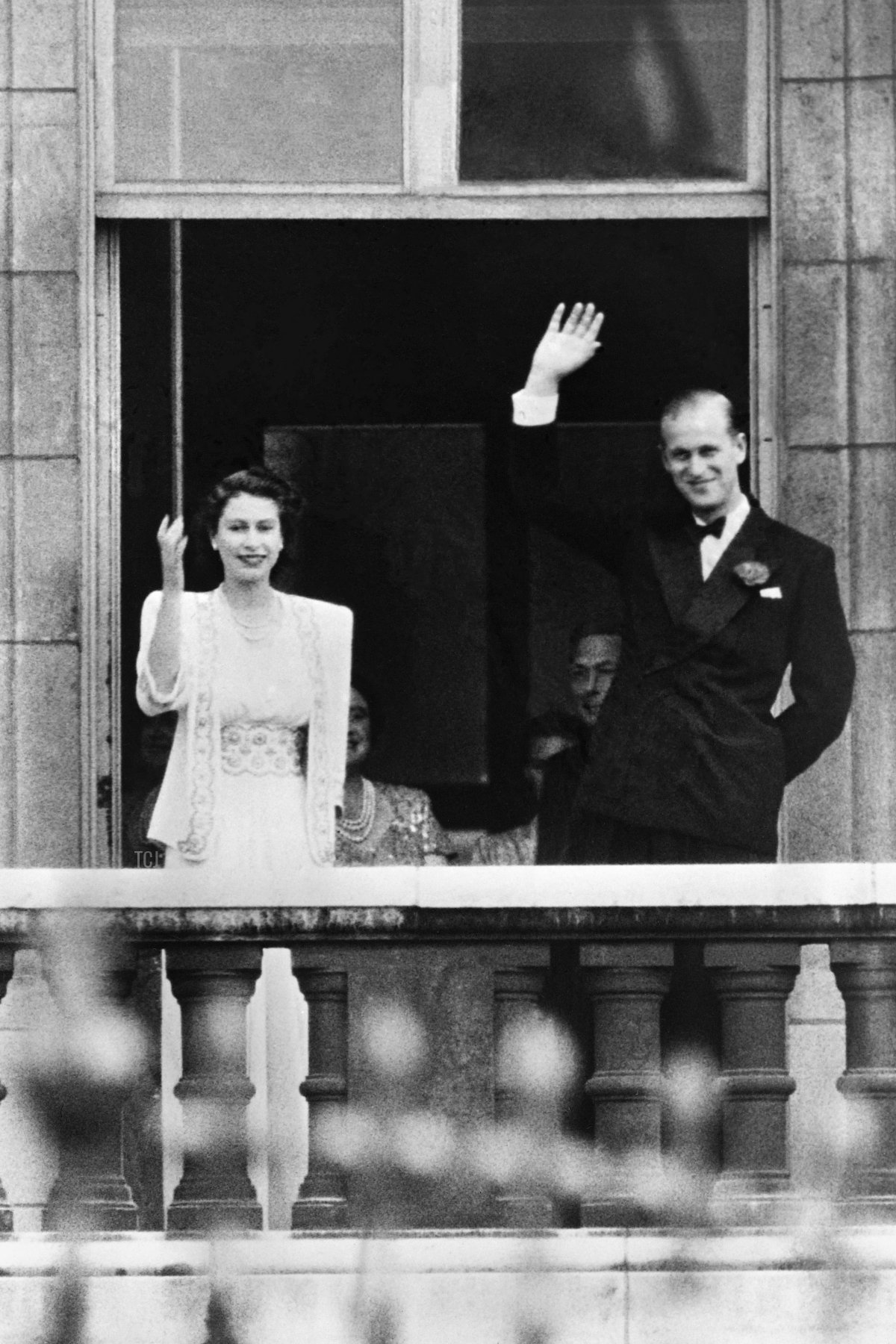
Elizabeth and Philip also greeted the crowd together alone on the balcony. It was the first of many appearances on the Buckingham Palace balcony for these two, who would greet untold numbers of people from the same vantage point over the next seven decades.
Leave a Reply
You must be logged in to post a comment.